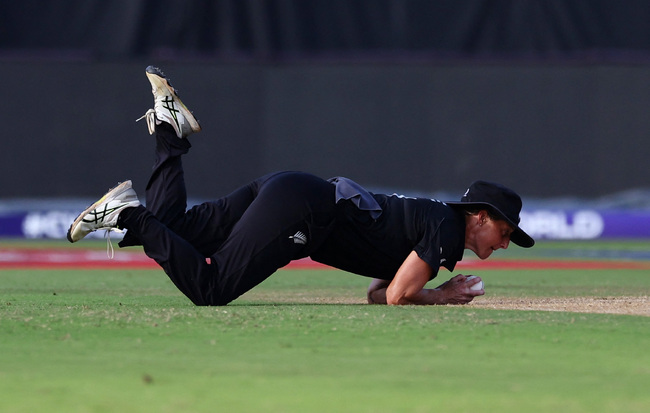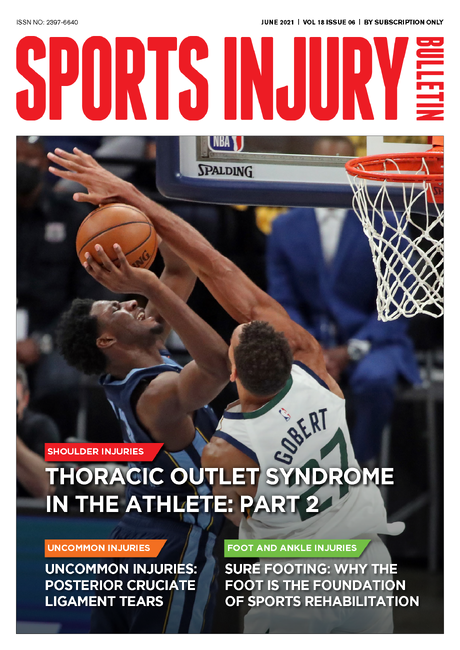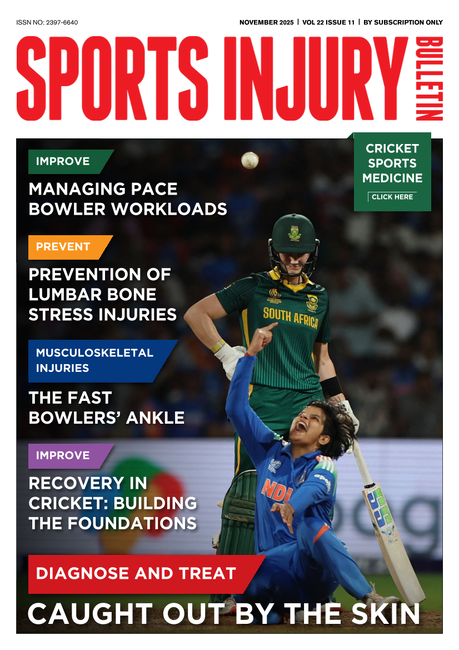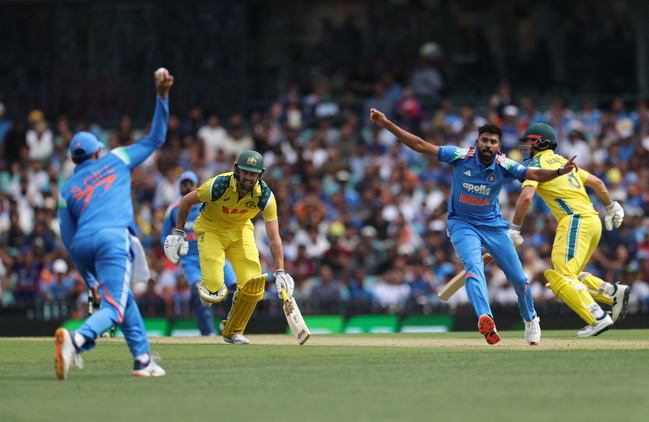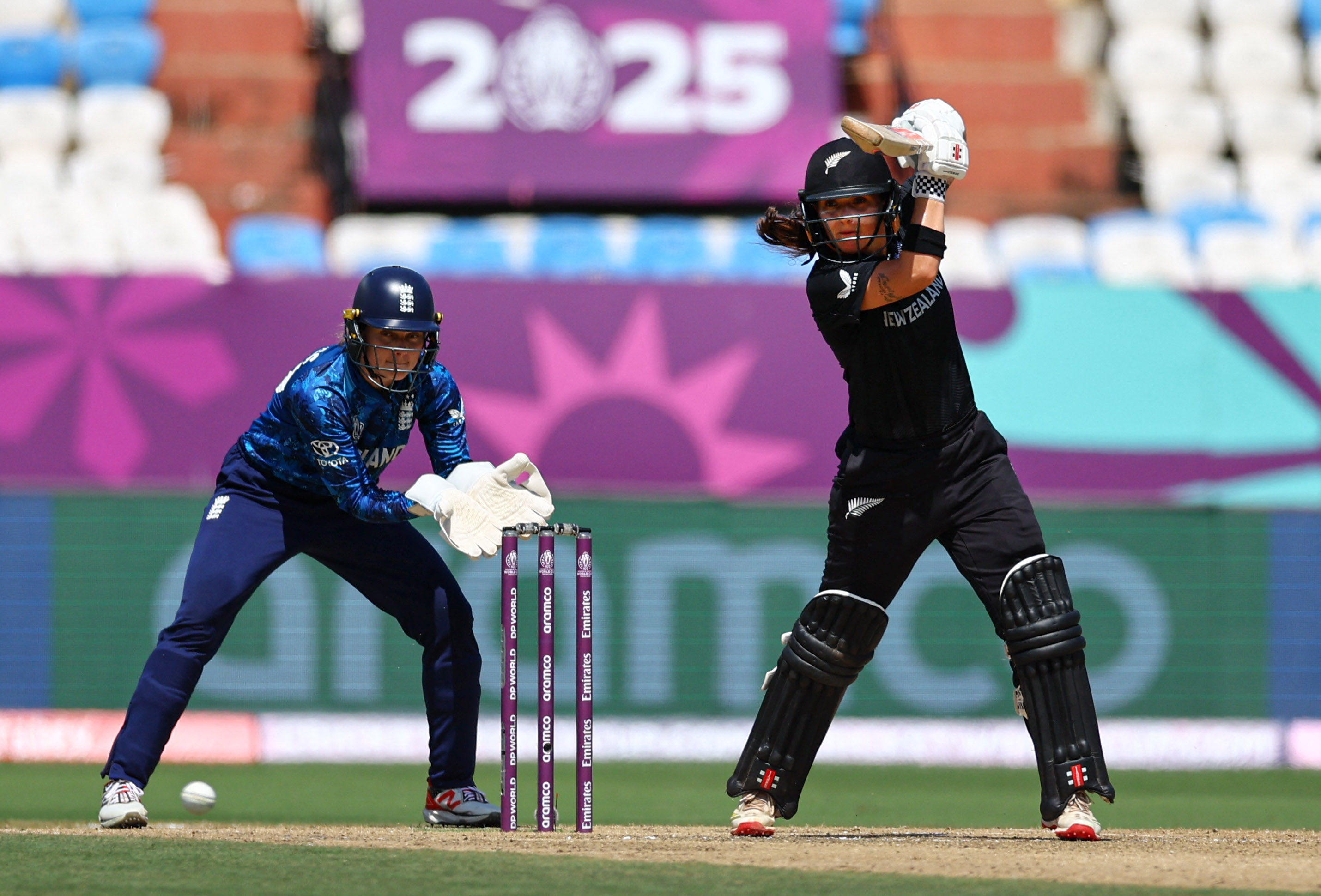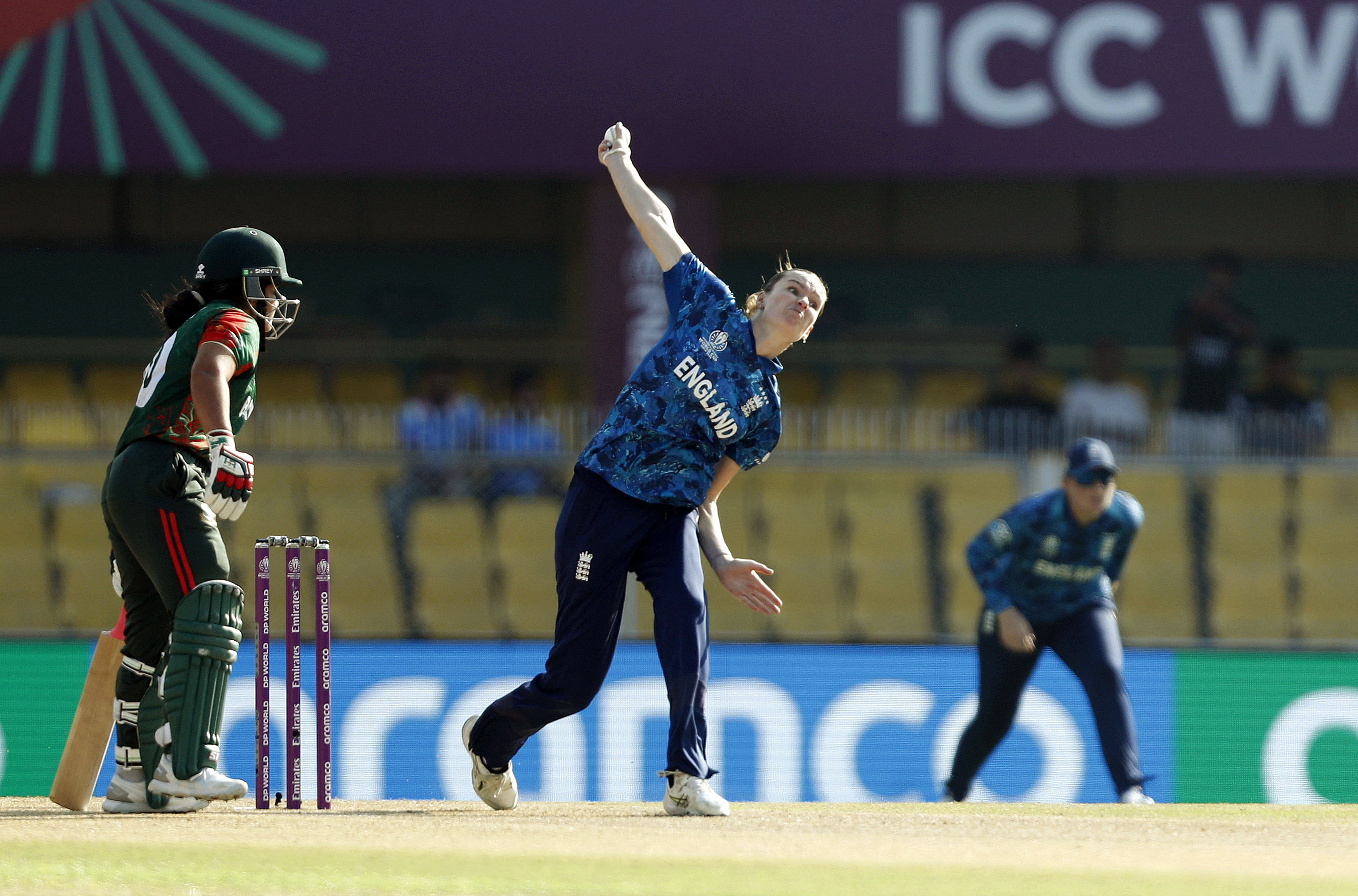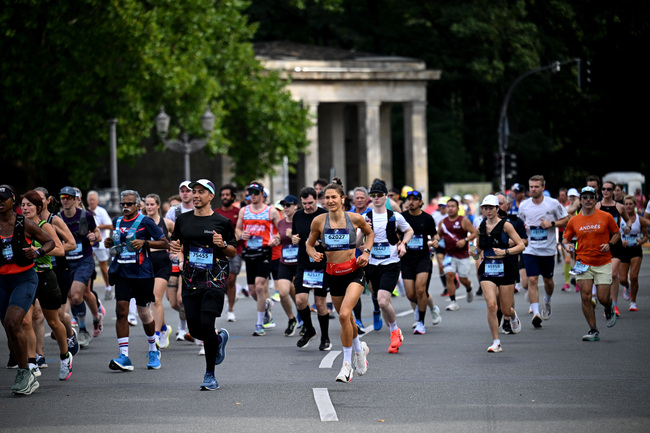You are viewing 1 of your 1 free articles
Fielding in Cricket: The Forgotten Discipline
The importance of accurate fielding is gaining traction in cricket as the shorter formats intensify. Megan Dutton discusses how fielding impacts cricketers and how clinicians can impact injury risk and management.
Cricket - England v New Zealand - New Zealand’s Sophie Devine in action REUTERS/Anushree Fadnavis.
Currently, fielding is one of the most under-researched disciplines in cricket, despite its growing importance as a decisive performance component of the game, particularly since the introduction of shorter, more explosive match formats. Effective fielding involves the efficient execution of numerous skills (sprinting, sliding, diving, catching, and throwing) performed under pressure and often in unbalanced or high-velocity positions. These high-intensity, multi-directional actions require athleticism, speed, and accuracy, placing considerable stress on the musculoskeletal system and increasing the risk of injury for cricketers. It is thus crucial for clinicians and coaches working with cricketers at all levels of play to understand the biomechanics of fielding and associated injury patterns.
Synthesizing the biomechanical, epidemiological injury surveillance, and musculoskeletal screening evidence associated with injury risk in cricket creates a comprehensive perspective. It provides a practical, clinically applicable framework for injury prevention and rehabilitation.
Biomechanical insights of the three primary cricket fielding skills, combined with epidemiological evidence, highlight injury incidence, common injury mechanisms, and modifiable risk factors. Fielding is based on three primary biomechanical skills:
- Catching,
- Ground fielding (sliding and diving),
- Throwing.
Clinical Applications
Clinicians must consider the biomechanical demands of the fielding position, with an emphasis on skills such as catching, ground fielding, and throwing. For example, cricketers can use four different hand positions when catching. The variability in catching technique may be largely due to the cricketer’s positioning on the field. Irrespective of which technique crickets use, injury risk to the hand and fingers can be mitigated by catching at the base of the fingers and absorbing momentum into the trunk. Ground fielding includes the skills of a hip slide, front slide, and dive. While the hip slide facilitates efficient retrieval-to-throw transitions, the ankle and knee are at risk of injury if the lead leg anchors into the ground. Conversely, the front slide reduces shoulder impact but is technically demanding, with limited uptake among women. Finally, optimal diving actions require coordinated hip rotation, trunk bracing, and rolling mechanics to dissipate force and minimize shoulder, specifically labral, andmeniscal knee trauma.
“… fielding in cricket is biomechanically complex and has a high susceptibility to injury risk.”
The biomechanics of throwing includes three different techniques: overhead, sidearm, and submarine (underarm). For example, the overhead throw offers the greatest shoulder stability. Still, it imposes high deceleration stress, whereas the sidearm and submarine throws increase elbow valgus stress by a factor of two and six times that experienced during overhead throwing, respectively. In addition, clinicians must consider the throwing workload, history of previous injury, and the musculoskeletal risk factors associated with shoulder injury. It is essential to consider that injury risk may increase when match conditions force suboptimal throwing mechanics from an unbalanced or dynamic position.
There is a difference in the incidence and nature of injury while fielding between men’s and women’s cricket. Injuries tend to be evenly distributed between the upper and lower limbs in men’s cricket. In contrast, upper-limb injuries predominate in the women’s game with variance in injury prevalence (%), mechanism of injury, and associated pathology (see table 1).
Table 1: Cricket fielding injury prevalence for men and women, associated machanisms of injury and pathology
| Body Region | Men (%) | Women (%) | Common Mechanism | Pathology |
| Shoulder | 15-36 | 9.1 | Throwing, Diving | Rotator cuff (including biceps) tendinopathy, Labral lesions |
| Elbow | 5-10 | 2-5 | Throwing overload (Sidearm or submarine technique is more prevalent) | Apophysitis (youth), Valgus extension overload/posterior impingement (adults) |
| Wrist and Hand | 11-13 | 13.7 | Catching, Ball Impact | Fractures, Dislocations, Webbing Lacerations |
| Hamstring | 10-14 | 12 | Sprinting, Acceleration/Deceleration | Strain, Rupture |
| Knee | 5-7 | 3.7 | Diving, Sliding | Meniscal |
| Ankle | 3-5 | 1-2 | Sliding, Sudden Stop | Ligament Sprains |
| Head | 2-3 | 2-3 | Diving, Collision, Ground Contact | Concussion |
Overall, fielding in cricket is biomechanically complex and has a high susceptibility to injury risk. Consequently, clinicians should integrate kinetic chain conditioning, workload monitoring, and technique optimization into both injury prevention and rehabilitation strategies. This holistic approach is thought to potentially reduce the risk of fielding-related injuries and enhance performance in cricket’s evolving match formats.
Risk Factors Associated with Overhead Throwing Shoulder Injuries
- Performing an excess of 75 throws/week or 40 throws/day(1).
- Reduced rest days between throwing sessions(1).
- Previous shoulder injury, increases the risk of re-injury by 1.9 times(2).
- Dominant supraspinatus tendon thickness of 5.85mm or greater as measured on diagnostic ultrasound(3).
- Non-dominant pectoralis minor length of 12.85cm or less, as measured from the coracoid process to the base of the 4th costosternal joint(3).
References
1. Br J Sports Med. 2011 Aug;45(10):805-8.
2. J Sci Med Sport. 2019 Nov;22(11):1200-1205.
3. The cricketer’s shoulder: Not a classic throwing shoulder. Physical Therapy in Sport. 2019;37:120-7.
Newsletter Sign Up
Subscriber Testimonials
Dr. Alexandra Fandetti-Robin, Back & Body Chiropractic
Elspeth Cowell MSCh DpodM SRCh HCPC reg
William Hunter, Nuffield Health
Newsletter Sign Up
Coaches Testimonials
Dr. Alexandra Fandetti-Robin, Back & Body Chiropractic
Elspeth Cowell MSCh DpodM SRCh HCPC reg
William Hunter, Nuffield Health
Be at the leading edge of sports injury management
Our international team of qualified experts (see above) spend hours poring over scores of technical journals and medical papers that even the most interested professionals don't have time to read.
For 17 years, we've helped hard-working physiotherapists and sports professionals like you, overwhelmed by the vast amount of new research, bring science to their treatment. Sports Injury Bulletin is the ideal resource for practitioners too busy to cull through all the monthly journals to find meaningful and applicable studies.
*includes 3 coaching manuals
Get Inspired
All the latest techniques and approaches
Sports Injury Bulletin brings together a worldwide panel of experts – including physiotherapists, doctors, researchers and sports scientists. Together we deliver everything you need to help your clients avoid – or recover as quickly as possible from – injuries.
We strip away the scientific jargon and deliver you easy-to-follow training exercises, nutrition tips, psychological strategies and recovery programmes and exercises in plain English.
